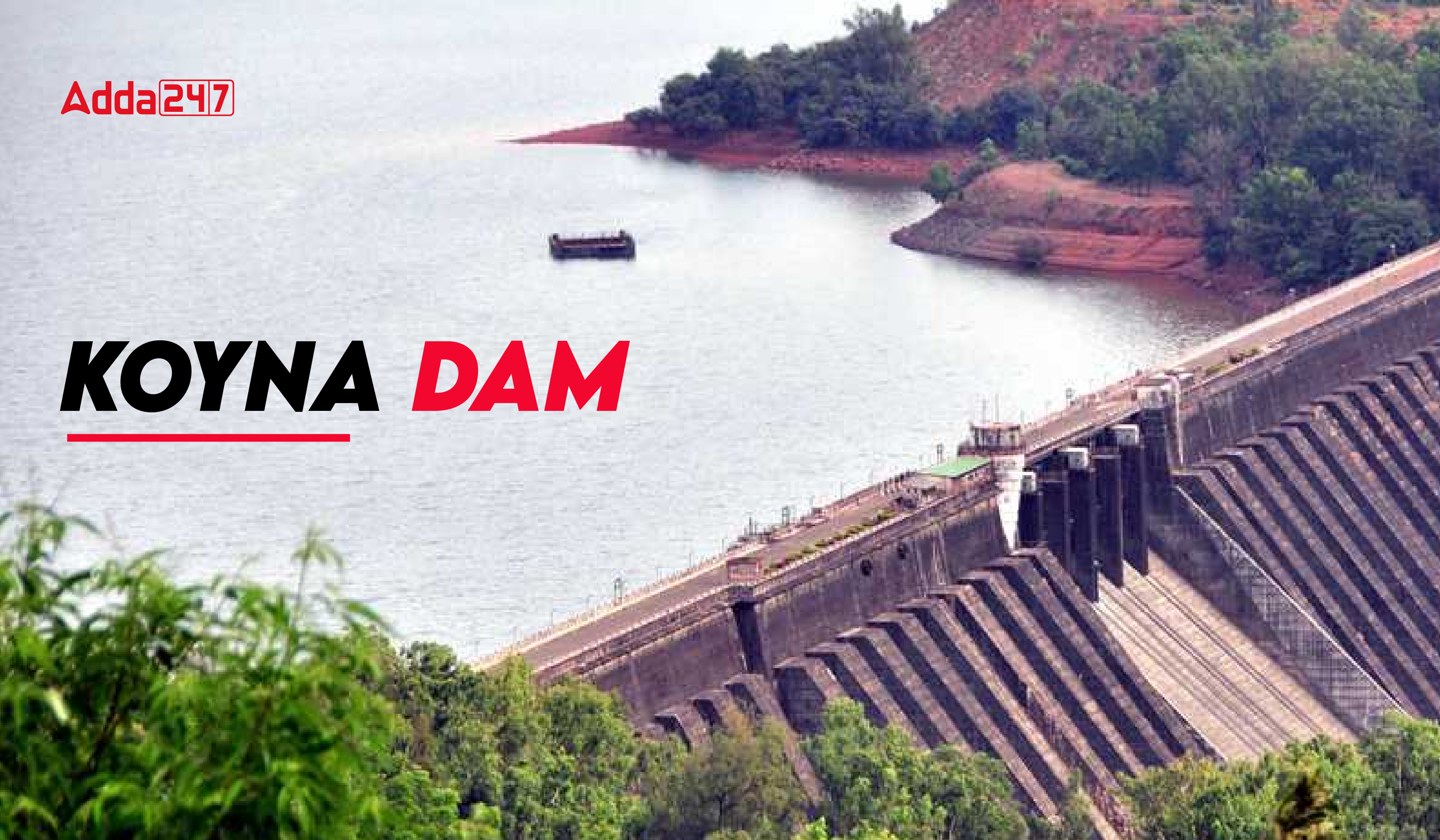Table of Contents
The Koyna Dam in Maharashtra, India, is one of the largest dams, built across the Koyna River. It’s a concrete and rubble structure situated in the Western Ghats. Serving as India’s second-largest hydroelectric power plant after the Tehri Dam Project, it provides power to nearby areas and water to Paschim Maharashtra while also preventing flooding during the monsoon. The dam creates the extensive Shivsagar Lake, and its hydroelectric capacity is 1,960 MW. It’s a crucial topic for the UPSC IAS exam, covering geography in Prelims paper1 and Mains GS paper1.
What is Koyna Dam?
The Koyna Dam, situated in Maharashtra, India, is one of the largest dams in the region. Constructed as a rubble-concrete dam, it spans the Koyna River, originating from Mahabaleshwar in the Sahyadri ranges. Positioned in Koyna Nagar, Satara district, it lies along the state highway between Chiplun and Karad, nestled within the Western Ghats
Koyna River facts
The Koyna River, a tributary of the Krishna River in western Maharashtra, originates near Mahabaleshwar, a renowned hill station in the Western Ghats. Unlike most rivers in Maharashtra that flow east to west, the Koyna River flows from north to south, maintaining a width of just 100 meters and a slow current. It merges with the Krishna River at Karad in the Satara district. Renowned for its role in the Koyna Hydroelectric Project, the Koyna River is often referred to as the Lifeline of Maharashtra due to its significant contribution to electricity generation. In addition to its energy significance, the river supports local agriculture and provides water for irrigation, making it a vital resource for the surrounding communities.
Koyna Dam Information
Here you can see the recent update on Koyna Dam. Check the following pointers:
- The Comptroller and Auditor General of India (CAG) report on States, presented in the Maharashtra assembly, emphasized a delay in granting Revised Administrative Approval to an unfinished hydroelectric project on the Koyna dam.
- This delay led to funds being blocked for over six years.
- To understand the reservoir triggered earthquakes in the Koyna – Warna region of Maharashtra the Borehole Geophysics Research Laboratory (BGRL) is using Scientific Deep Drilling method to drill Earth crust to a depth of 6 km.
- This is the only active deep drilling project India is conducting as of now, to study about the reasons of seismic and earthquake activities.
- Already 3 Km deep drilling has been completed.
- findings from the drilling till now include the above 1.2km layer had a lava flow and at depth of 3 km granite rocks are found also it has water.
Brief Details about Koyna Dam
- Built on the Koyna River.
- Located in Koyna Nagar, Satara District, Maharashtra.
- Nestled in the Western Ghats.
- Mainly generates hydroelectricity and provides some irrigation to nearby areas.
- The largest completed hydroelectric power plant in India.
- Total installed capacity of 1,920 MW.
- Suffered minor cracks during the 1967 earthquake in Koyna Nagar and has experienced other smaller earthquakes since then.
| Attribute | Description |
| Location | Satara district, Maharashtra, India |
| Purpose |
Hydroelectric power generation, irrigation, and water supply
|
| Hydroelectric Power |
Koyna Hydroelectric Power Plant is located here, one of India’s largest hydroelectric power stations
|
| Reservoir |
Creates Shivsagar Lake, a large and scenic reservoir
|
| Earthquake Controversy |
Associated with induced seismicity and earthquakes in the region
|
| Tourism |
A popular tourist destination for its natural beauty and recreational activities
|
| Historical Significance |
Played a crucial role in the region’s development
|
| Engineering Feat |
Noted for its size and engineering challenges due to the Western Ghats terrain
|
Objective of Construction of Koyna Dam
The primary aim of the dam is to produce hydroelectric power and provide irrigation to nearby regions. Presently, the Koyna Hydroelectric Project stands as India’s largest completed hydroelectric power plant, boasting a total installed capacity of 1,920 MW. Recognized for its significant power generation capacity, the Koyna River holds the title of the ‘lifeline of Maharashtra’.
Situated at the centre of the dam, the spillway features 6 radial gates and plays a pivotal role in flood control during the monsoon season. The reservoir formed by the dam’s catchment area gives rise to Shivsagar Lake, spanning approximately 50 km (31 mi) in length. This project represents one of the largest civil engineering initiatives undertaken post-Indian independence. The management of the Koyna hydroelectric project falls under the jurisdiction of the Maharashtra State Electricity Board.
History of Koyna Dam
- Construction of the Koyna Dam commenced in 1956, and it was inaugurated in 1964.
- Following World War I (1914-18), the Tata group established a hydroelectric facility on the Koyna River.
- The dam experienced some cracks during the 1967 earthquake in Koyna Nagar.
- Several minor earthquakes have occurred in the vicinity of the dam.
Facts about Koyna Dam
- The Koyna River is a right-bank tributary of the Krishna River.
- It originates near Mahabaleshwar, a renowned hill station in the Sahyadri ranges of the Western Ghats.
- With an elevation ranging from 550 meters to 1,460 meters above mean sea level, it reflects a physiographic setup typical of the Deccan plateau in the Western Ghats region.
- Unlike most rivers in Maharashtra, which flow from east to west, the Koyna flows from north to south.
- The confluence of the Krishna and Koyna rivers at Karad is called ‘Preeti Sangam,’ meaning ‘confluence of love.’
- Karad, Maharashtra, is renowned for its sugar production and is the top sugar-producing state in India, accounting for 138 lakh tonnes of sugar production in 2021-22.
- The Koyna River is also referred to as the “Life Line of Maharashtra” due to its electricity-generating potential through the Koyna Hydroelectric Project.



 TSPSC Group 1 Question Paper 2024, Downl...
TSPSC Group 1 Question Paper 2024, Downl...
 TSPSC Group 1 Answer key 2024 Out, Downl...
TSPSC Group 1 Answer key 2024 Out, Downl...
 UPSC Prelims 2024 Question Paper, Downlo...
UPSC Prelims 2024 Question Paper, Downlo...





